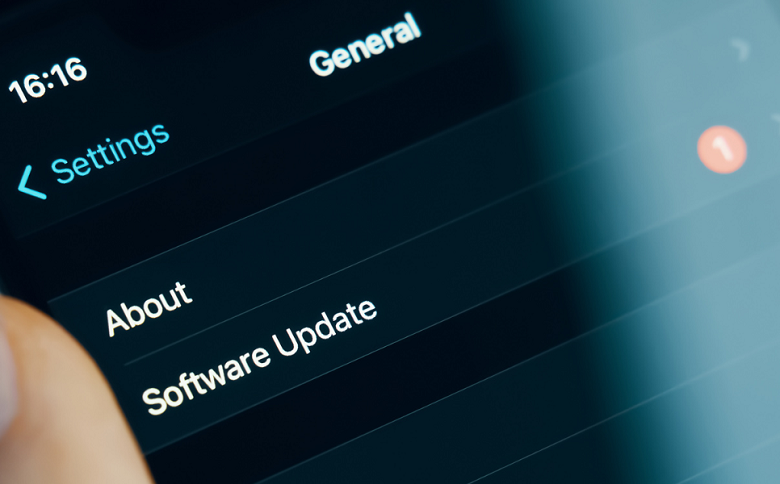Whether you’ve been using your device for a few days or a few years, you’ve probably spent some time updating your software. In fact, it probably feels like notifications are popping up all the time. While software updates are tempting to ignore, they really should be accepted as soon as possible. But why are software updates so important?
It turns out those pesky notifications have a purpose — and a pretty essential one. Software updates are crucial to keeping your digital devices secure and defending them against new and existing cyber attacks. Making sure you don’t ignore software updates is a great way to protect yourself against cyber threats. Here are 4 good reasons why clicking the “remind me later” button isn’t a great idea.
#1 Software updates address vulnerabilities
The number one reason to keep up with software updates is security. As cybercriminals introduce new cyber threats, software developers quickly create patches and fixes to address any known vulnerabilities in their product. In other words, the best antivirus software programs are constantly evolving to respond to new and emerging threats.
Why is it important to update software regularly? If you don’t accept a software update right away, you’re essentially leaving the door wide open for hackers. Running outdated software is a risky move because it leaves you unprotected, and makes bad actors’ jobs easier. Hackers can write specific code to target the weakness they discovered and use that to access your device to infect it with malware or steal your data, for example.
#2 Software updates can improve your device’s performance
Software updates go beyond security. Software developers are always assessing the performance of their product and trying to figure out how to promote the best user experience. They can then roll out these changes as part of a software update, not only boosting your device’s protection but also streamlining its performance.
Let’s look at a few examples. Software updates can upgrade your device’s processing speed so you deal with less lagging and crashes. They can increase the longevity of your device’s hardware, which means your computer will be able to complete tasks quicker. Software updates can also make your computer compatible with the latest technology, and allow it to work with outside devices like printers or smartphones. For instance, a recent Microsoft update allowed users to seamlessly chat with Mac and iOS users.

#3 Software updates help to protect your data
Data is incredibly valuable to individuals and companies, and cyber criminals are fully aware of that. When hackers are successful, they often search for sensitive information, such as banking details, usernames, passwords and personal identifying information. In many cases, they use this to commit fraud or identity theft or launch a ransomware attack, which is when hackers hold your data “hostage” until you pay a sum of money.
This is where software updates come in. By fixing flaws and addressing a range of threats, keeping your software up-to-date is one of the easiest ways to protect your data.
#4 Software updates offer new features
Installing software updates can also add new features to your device, and delete old ones that are no longer needed. Think of it like spring cleaning: the software sweeps through your device and removes obsolete features that are taking up space on your hard drive. It also upgrades features to make sure you have the latest ones installed. Many of these updates are free and can make your user experience much better.
For instance, Zoom is well-known for its comprehensive software updates — in recent months, the company has improved its polling feature, allowed users to hide or display chat notifications and introduced the ability to view breakout room activities after main sessions.
Last Tips for keeping your software up-to-date
Our advice? “Set it and forget it” by turning on automatic updates. That way, you’ll never miss one, and you can adjust your auto-updates to run when you’re away from your computer. While you’re at it, switch on automatic updates for your other devices, such as your smartphone.
If you prefer a more manual approach, or you have software that doesn’t offer an auto option, check for updates regularly. The tech world moves quickly, so every two weeks is a good rule of thumb. If an update is available, aim to install it immediately. Updates typically take anywhere from five to 20 minutes, and your device will likely need to restart as part of the update. At ESET, we see that as an opportunity to stretch our legs or make a cup of coffee!
Top tip: Get into the habit of updating your operating system at the same time as your antivirus software. This adds an extra layer of security for your device and data.
Keep your doors closed to hackers
To fully protect yourself against cyber threats, it’s worth investing in premium software. For Mac and PC users, ESET Internet Security offers a real-time, multi-layered defence against a variety of cyber attacks, including malware, ransomware and spyware. It also prevents unauthorised users accesssing your networks and blocks offensive or harmful content so you can browse the web safely.
For Android users, ESET Mobile Security provides the same level of security, and you can install it on multiple smartphones, tablets and laptops under one shared license.




